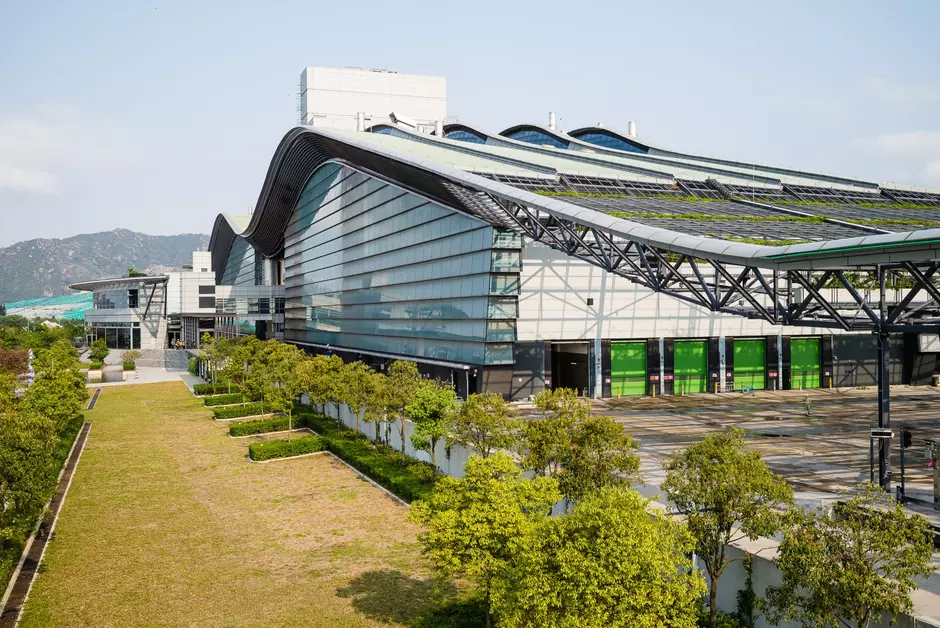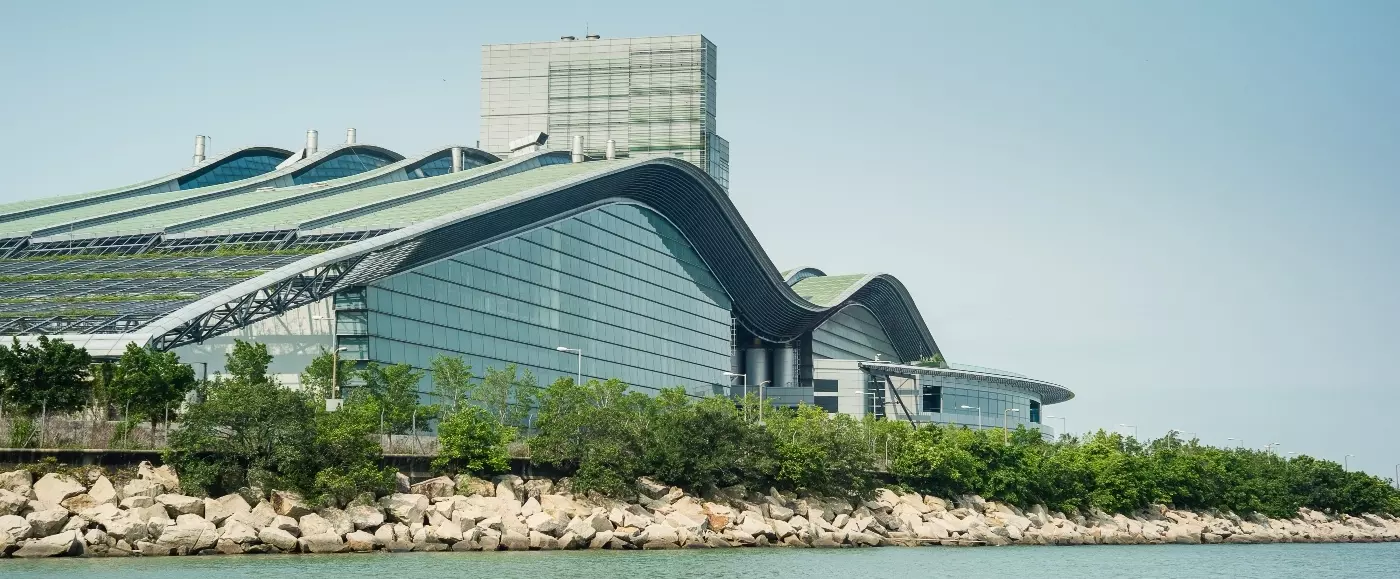URBAN ECOLOGY
Built for the energy efficient treatment of sludge from eleven wastewater treatment plants in this region with almost 7.3 million inhabitants, the plant is autonomous in water and energy. Sludge weight will be reduced by 90% through incineration and residues will be buried in landfills, whereas today all sewage sludge goes to landfills. The plant's installed capacity makes it the largest wastewater sludge incineration unit in the world.
600 m3 of drinking water is produced every day by a seawater desalination plant on the site. This water is used by the plant for various operational needs. A wastewater recycling circuit avoids discharging effluents into the sea. During the sludge treatment process, it could produce up to 14 MW of electricity which is more than the site needs to operate. The excess electricity produced is therefore distributed on the public network.
ART OF LIVING
Veolia asked the French architecture firm, Claude Vasconi to propose a highly innovative architectural concept for the seven-hectare complex. Inspired by the local landscape, the building, situated between waves and hills, blends in with the environment.
Dedicated to create a harmony with the environment, the facility is covered by 70% of green area, equipped with many public facilities, such as visitor gallery, lecture theatre, and cafeteria with sea view, as well as spa pools, footbaths and observation platform under the roof of the building to admire the view of Deep Bay and Shenzhen.
Key Figures
Incineration capacity of 2,000 tons of sludge per day
600m3 of potable and process water produced every day
14 MW of electricity produced
15 years operating contract
Customer benefits
- Preservation of quality of life
- Control of the overall environmental footprint
Solutions
- Engineering and building treatment plants
- Desalination and water production
- Wastewater recycling
- Energy recovery from sludge incineration
- Operation, maintenance and optimization
- Management and human capital



